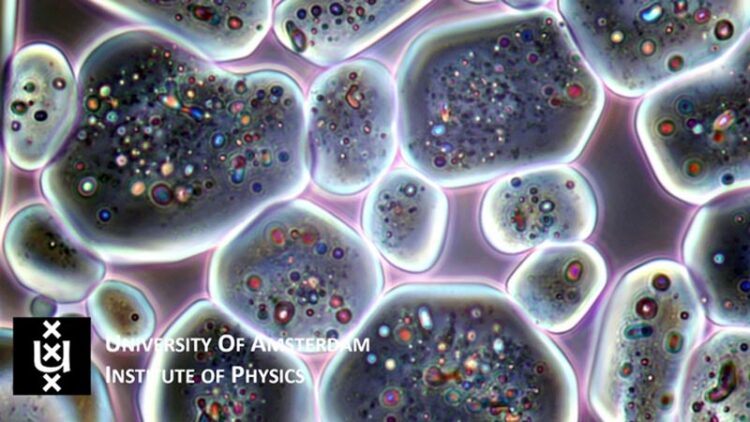A crystal – but not as we know it

Floppy crystals. Salts that contain water in their crystalline structure can become soft and floppy.
Credit: UvA
When we think of crystals, we think of ice, kitchen salt, quartz, and so on – hard solids whose shapes show a regular pattern.
Research performed in the group of UvA-IoP physicist Noushine Shahidzadeh shows that crystals can be quite different: they can be soft and deformable shapes without the familiar facets. The paper where these results were reported was featured as an Editor’s Highlight by the journal Nature Communications.
Floppy crystals
Crystals are generically hard solids, and are usually identified by their well-defined geometrical shape that reflects the underlying highly ordered molecular structure. In their paper, the physicists show that surprisingly, some salts that contain water in their crystalline structure (so-called hydrated salts) can behave remarkably differently. When these salts are slowly dissolved through contact with humid air, they become soft, deformable and lose their facets. This is in contrast to regular crystals, that keep their faceted shape and stay hard while dissolving. Thus, the microcrystals that were studied simultaneously are crystalline in the bulk of the material, but show liquid-like molecular mobility at their surfaces.
Editors’ Highlight
The paper was published in Nature Communications and was selected by the editors of that journal as one of the featured articles for the Editors’ Highlights webpage of recent research in the section Materials science and chemistry. The Editors’ Highlights pages aim to showcase the 50 best papers recently published in an area.
Publication
Softness of hydrated salt crystals under deliquescence, Rozeline Wijnhorst, Menno Demmenie, Etienne Jambon-Puillet, Freek Ariese, Daniel Bonn and Noushine Shahidzadeh. Nature Communications 14 (2023) 1090.
Media Contact
Laura Erdtsieck
Universiteit van Amsterdam
persvoorlichting@uva.nl
Office: 0031-205-252-695
All latest news from the category: Physics and Astronomy
This area deals with the fundamental laws and building blocks of nature and how they interact, the properties and the behavior of matter, and research into space and time and their structures.
innovations-report provides in-depth reports and articles on subjects such as astrophysics, laser technologies, nuclear, quantum, particle and solid-state physics, nanotechnologies, planetary research and findings (Mars, Venus) and developments related to the Hubble Telescope.
Newest articles

First-of-its-kind study uses remote sensing to monitor plastic debris in rivers and lakes
Remote sensing creates a cost-effective solution to monitoring plastic pollution. A first-of-its-kind study from researchers at the University of Minnesota Twin Cities shows how remote sensing can help monitor and…

Laser-based artificial neuron mimics nerve cell functions at lightning speed
With a processing speed a billion times faster than nature, chip-based laser neuron could help advance AI tasks such as pattern recognition and sequence prediction. Researchers have developed a laser-based…

Optimising the processing of plastic waste
Just one look in the yellow bin reveals a colourful jumble of different types of plastic. However, the purer and more uniform plastic waste is, the easier it is to…


